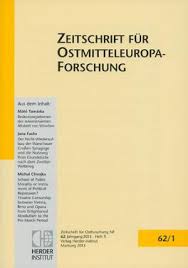Ausstellung, Stadt und Land: Die Architektur der Posener Ausstellungen 1911 und 1929
Exhibition, City and Province: The Architecture of the Posen Exhibitions of 1911 and 1929
Author(s): Hanna Grzeszczuk-BrendelSubject(s): Cultural history, Architecture, Political history, Rural and urban sociology, Pre-WW I & WW I (1900 -1919), Interwar Period (1920 - 1939)
Published by: Verlag Herder-Institut
Keywords: Exhibition; City and Province; Architecture of the Posen Exhibitions; 1911 and 1929;
Summary/Abstract: The presentation of the achievements of a region and of a whole province in the two exhibitions held in Posen – the East German Exhibition of 1911 and the General Provincial Exhibition of 1929 – was linked to political goals. The aim of the East German Exhibition was to increase the level of awareness of the Reich’s eastern provinces in the German population as a whole. This was part of a new “Hebungspolitik” (policy of boosting German culture) aimed at halting the drift of the German population away from these areas. The choice of Posen as the location of the exhibition was not just based on its function as the provincial capital, but rather the result of its recognition as a ‘Residenzstadt’, one of the provincial seats of the Kaiser. The site of the exhibition and its connections with the city, especially with the nearby ‘Kaiser quarter’ allow us to recognise the order of importance of the two areas. The East German Exhibition drew attention to Imperial Residence, the castle built on Kaiser Wilhelm II’s orders and its adjacent buildings, thereby largely complementing and reinforcing the ideology it represented. By way of contrast, the conception behind the General Provincial Exhibition which was held to mark the tenth anniversary of Poland’s regained independence, was to display the achievements of a sovereign state, and thus serve to reinforce the national identity and national pride of the Poles. The proximity of the ‘Kaiser quarter’ caused the the exhibition to ‘turn its back’ on the city and to present Posen principally as the perfect organiser of the event. In this situation the architecture at the exhibition, the design and contents of the pavilions themselves, gained in importance. The variety of their designs reflected the numerous architectural movements of the time and gave a modern, contemporary resonance to the ideological references attributed to them. Hence they are to be seen, against the background of the discussion about the ‘conception’ of the state, as both deeply rooted in tradition, and alternatively, openly facing the present. Particular emphasis should be given to the notion that the political ‘programme’ of the two exhibitions under discussion, which were held on the same site, was expressed not only in their architecture, but even more in their siting and their connections with the city of Posen.
Journal: Zeitschrift für Ostmitteleuropa-Forschung
- Issue Year: 58/2009
- Issue No: 1-2
- Page Range: 77-110
- Page Count: 34
- Language: German

